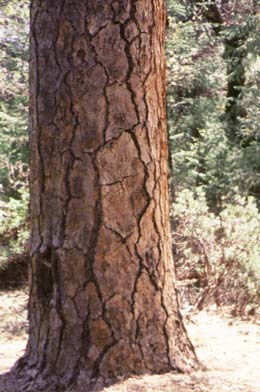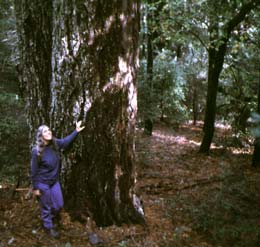| |
|
|
|
|
| |
|
|
||
| |
||||
| |
|
|||
| |
|
|||
| Roadless
Area Protection Fire Management Policy Landscape Linkages Wildlands Science Private Lands Stewardship Hike Calendar Hike Recaps Ridge Trail Links |
|
At the southern extreme of the Pacific rainforest, the California North
Coast Range (Range) is a component of the biologically rich Klamath-Siskiyou
ecoregion, possesses regionally high concentrations of old-growth Douglas
fir and oak woodlands, and is home to numerous rare, endemic and imperiled
species. As the headwaters of 4 of the 5 major branches of the 900,000
hectare Wild and Scenic Eel River watershed the Range is essential for
the survival of threatened regional salmonids populations.
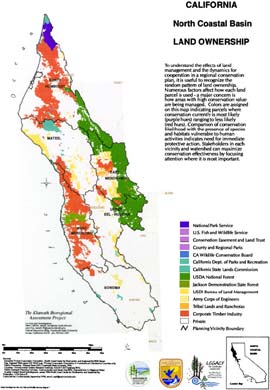 |
|
|
|
The remaining roadless areas on the Six Rivers and Mendocino National Forests (Six Rivers, Mendocino) continue to face constant threats from road development, logging and ecologically devastating fire management policies. In order to provide the strongest possible protection for the largest remaining wild roadless areas in the southern Six Rivers and Mendocino National Forest, we have created the Community Wilderness Alliance. We are working with landowners, outdoor enthusiasts , grassroots advocates and the statewide California Wild Heritage Campaign and the California Wilderness Coalition to obtain federal wilderness designation for over 225,000 wildland acres throughout the north coast. As part of our broad outreach and education work we are leading "show-me" hikes into these unprotected areas every weekend through October.
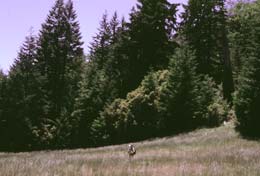 |
|
Check out all the upcoming hikes on our Hike Calendar or visit Hike Recaps to catch up on some of the recent hikes we have led. You can also learn about an exciting opportunity to help create the North Coast Ridge Trail that will wind through over 100 miles of spectacular forest and oak woodland.
Many consider that fire management and logging have been the two primary
causes of native forest degradation over the last 150 years. A misguided
policy of fire suppression and heavy-handed fuels treatments has altered
species composition and forest structure, and threatens the biological
integrity of the Six Rivers and Mendocino National Forests.
Yet, the Six Rivers and Mendocino continue to suppress naturally ignited fires across the landscape. Also, in the name of fuels management the Six Rivers proposes to log un-entered roadless forest stands miles away from the nearest community. This practice directly contravenes Forest Service research which prioritizes thinning overgrown mono-culture plantations and protecting rural communities by reducing fuel loads within 60 meters of homes. Fire protection should be centered around people, not on critical biological core areas that require wildland fire to maintain native ecological diversity including the recruitment of ancient forest habitat.
AFI is working closely with forest conservation organizations to get the protection that rural communities need and to halt logging of ancient fire-adapted forest in the name of fire management, and to halt the harmful suppression of naturally occurring wildland fires within the native forest of the North Coast Range.
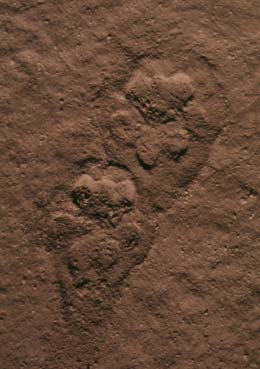 |
|
 |
Working with regional conservation partners, AFI is developing landscape level tools that can also be used on the ground in the evaluation of Forest Service management actions. This cutting-edge wildlands analysis will aid in identifying habitat linkages required for species dispersal and migration. Many of these critical wildways lie within lands designated "Matrix", the least protected management category on the forest, exposing them to all forms of development and further degradation. We are working to ensure the protection and restoration of these identified wildlife linkages, essential biological bridges amongst isolated islands of habitat refuge
Underlying Six Rivers' fire and comprehensive land management plans is the vegetation aging and composition information gathered and analyzed by the Forest Service. This vegetation data effects logging, ancient forest protection, salmon restoration and the survival of the Range's threatened and endangered species, such as the Northern Spotted Owl and the Humboldt marten. If this baseline information is inaccurate, incorrect land management actions could cause irreparable harm to the complex ecosystem of the mountain range.
Astoundingly, the vegetation data of the Klamath National Forest, bordering the Six Rivers to the northeast, was found to be 40% inaccurate ! This sobering fact was only discovered after a non-profit conservation organization analyzed the Klamath National Forest's vegetation data.
AFI has begun the process of analyzing the Six Rivers National Forest vegetation base data and resultant Forest Service analysis. By working with conservation biologists AFI is working to ensure that the decisions effecting our native forest system are not based on faulty information resulting in mis-guided management decisions.
Contiguous to the public lands of the Range are hundreds of thousands of acres of privately stewarded lands. These private lands are of equal importance to public lands in the long-term restoration of native biodiversity along the North Coast Range. Ecologically sound management practices on private lands can provide habitat continuity, minimize edge effects around large habitat blocks and help ensure that family lands can support local families for generations to come.
Working with regional conservation organizations we will aid willing local landowners in identifying conservation priorities and opportunities for joint public-private management initiatives, and we will provide educational support for sustainable management practices.

